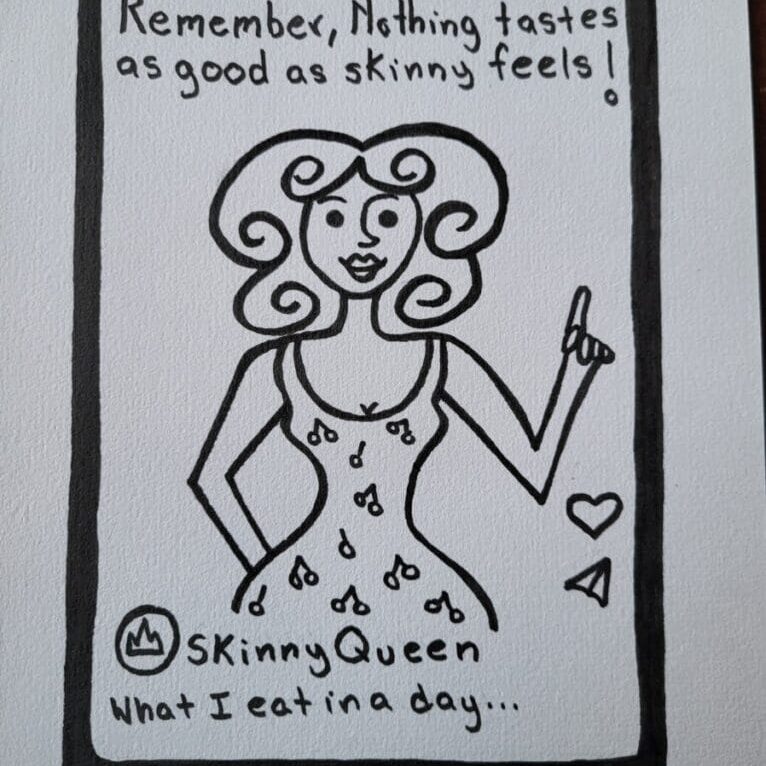
Gen Z’s current obsession with weight loss
The Ozempic epidemic
As we celebrate the new year, we also face pressure to adopt new habits and make New Year’s resolutions. Some of the most popular resolutions involve living healthier lives through some new fad diet or exercise craze. Eating nutritious food and exercising are a part of maintaining a healthy life, but obsessing over weight loss is not.
Last year, we witnessed a shift in what is considered the “ideal body type,” in part due to the introduction of weight loss medications such as Ozempic marketed to young people through social media. Now, Gen Z is faced with a resurgence in the popularity of the slim physique and increasing pressure to obtain or maintain that look. But what are the consequences for young people who follow this trend?
A history of beauty standards
Beauty standards favouring ideal body types is a tale as old as time, dating back to 500–400 BC, promoting the consumption of deer livers and lion hearts by athletes and warriors for increased bravery and strength. Since then, the fad diet and diet culture has taken on new life. Instead of promoting bravery and strength, they exploit and prey upon insecurities and low self-esteem.
In the 1920s, flapper girls prided themselves on their modern look. Known for their thin figures and flat chests, this was the ideal body type of the time. A popular attitude held at this time was that only women who weren’t desperate for food had the privilege of restricting their consumption. This went hand in hand with the war raging on during this time and American citizens were encouraged to ration their food in the name of patriotism. Fat people were demonized and considered to be hoarding food in their bodies and viewed as unpatriotic threats to America’s freedom.
A few decades later, in the 1950s, the popularization of the nuclear family put pressure on women to have a specific type of family and home, as well as look a certain way. This led to the rise of diet pills and the multitude of fad diets, which are still popular today. Ten years later, we saw a counterculture push back against this norm when the fat liberation movement began to form. This era also saw Black women push back against body ideals, as well as make associations between diet culture and racism.
By the 2000s however, this work began to unravel with the cultural obsession with the supermodels of the time. Iconic figures such as Kate Moss ushered in an era of the super thin “heroin chic.” This was followed by the creation of the tabloids and their obsession with the bodies of female celebrities.
Riding on the heels of this decade, we saw the invention of the internet, which allowed trends to catch on like wildfire and gave like-minded people a resource to connect with one another. One consequence of this was the rise of eating disorder communities on social media platforms such as Tumblr and Twitter (now X).
Body types as trends
Today, history is repeating itself, with social media at the core. Trends involving body checking, pro-anorexia culture and Ozempic are exposing a whole new generation to a complicated relationship with food. Content creators such as Liv Schmidt make thousands by telling their young adult audience how to live a “skinny life” and promoting unhealthy habits as the ideal lifestyle.
These trends are dangerous
So, what does this mean for the young people being exposed to and influenced by this content? Thinness being equated to beauty, success and health in the media poses a dangerous and difficult narrative for young people to be subjected to. It can lead to low self-esteem and encourage the use of unhealthy weight loss methods. Weight loss isn’t the only symptom of these extreme methods, as nutritional deficiencies, menstrual irregularities and bone density loss are likely to follow.
Education is the solution
The good news is, the more educated someone is on diet culture, the less likely they are to fall victim to some of its harsher consequences. Diet culture is deeply ingrained in our society, making it difficult not to engage with it, but spreading awareness on the issue and its effects is a good start to developing a healthy relationship with your body, food and exercise, allowing all of us to focus on true health in the new year.






